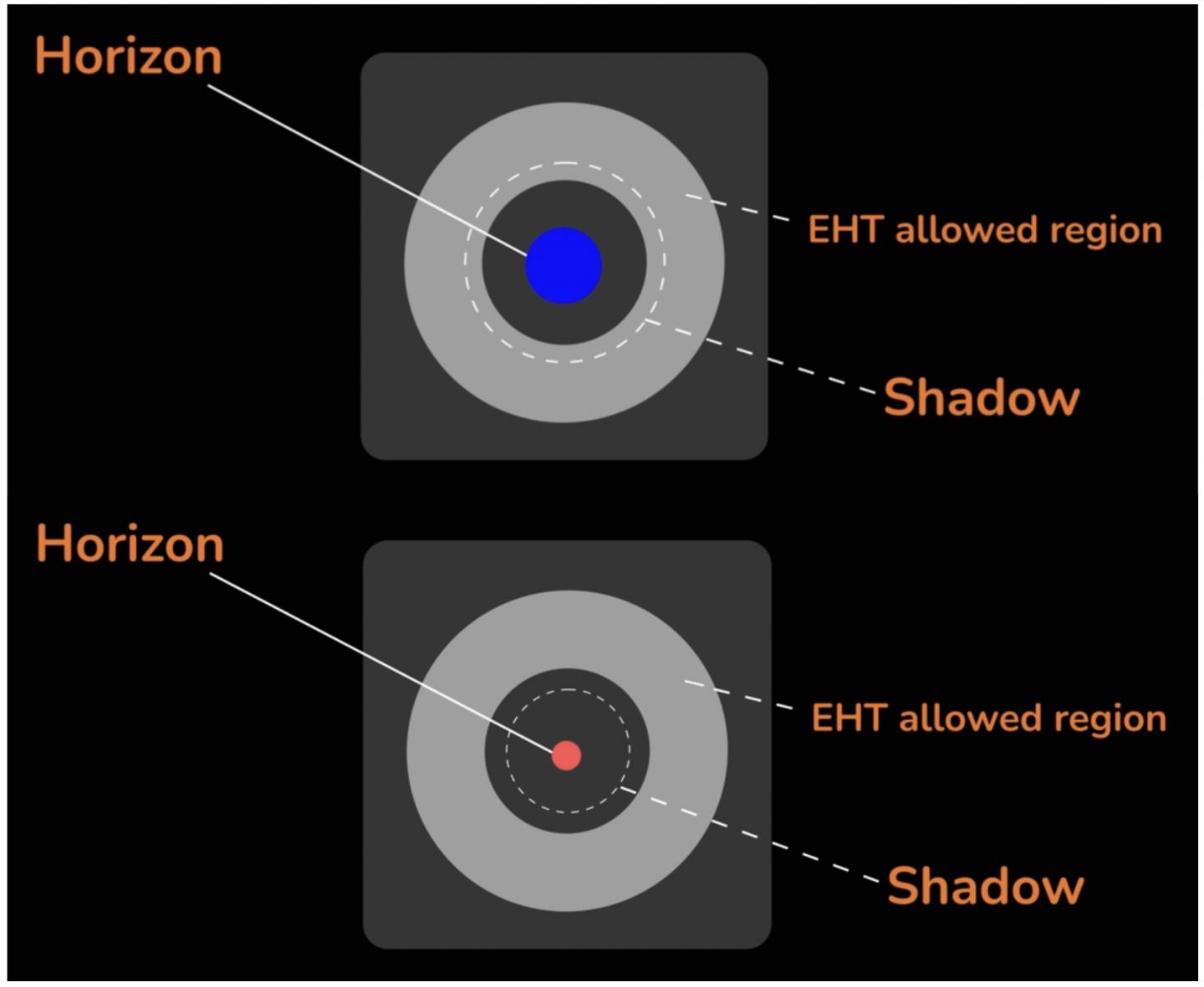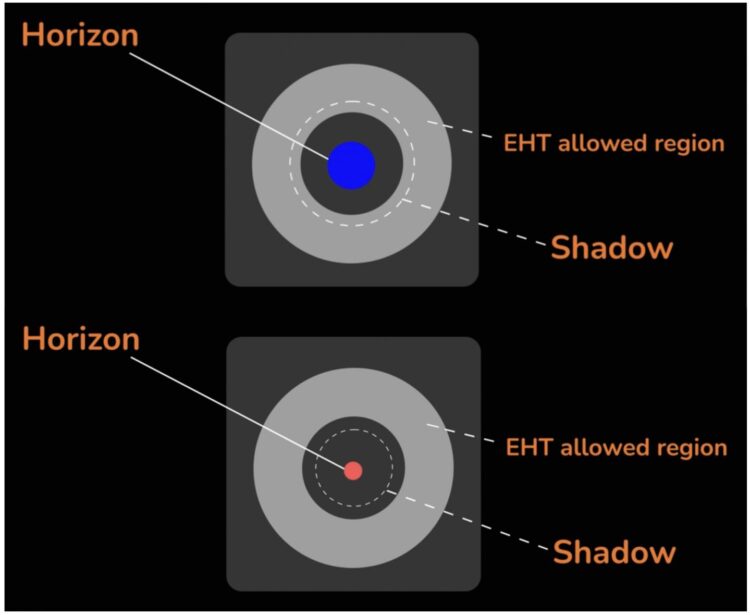Scientists at Goethe University Frankfurt and the Event Horizon Telescope Collaboration use data which produced the first image of a black hole to constrain its fundamental properties

Credit: Prashant Kocherlakota, Luciano Rezzolla (Goethe University Frankfurt and EHT Collaboration/ Fiks Film 2021)
FRANKFURT. As first pointed out by the German astronomer Karl Schwarzschild, black holes bend space-time to an extreme degree due to their extraordinary concentration of mass, and heat up the matter in their vicinity so that it begins to glow. New Zealand physicist Roy Kerr showed rotation can change the black hole’s size and the geometry of its surroundings. The “edge” of a black hole is known as the event horizon, the boundary around the concentration of mass beyond which light and matter cannot escape and which makes the black hole “black”. Black holes, theory predicts, can be described by a handful of properties: mass, spin, and a variety of possible charges.
In addition to black holes predicted from Einstein’s theory of general relativity, one can consider those from models inspired by string theories, which describe matter and all particles as modes of tiny vibrating strings. String-inspired theories of black holes predict the existence of an additional field in the description of fundamental physics, which leads to observable modifications in the sizes of black holes as well as in the curvature in their vicinity.
Physicists Dr Prashant Kocherlakota and Professor Luciano Rezzolla from the Institute for Theoretical Physics at Goethe University Frankfurt, have now investigated for the first time how the different theories fit with the observational data of the black hole M87* at the centre of the galaxy Messier 87. The image of M87*, taken in 2019 by the international Event Horizon Telescope (EHT) collaboration, was the first experimental proof of the actual existence of black holes after the measurement of gravitational waves in 2015.
The result of these investigations: The data from M87* are in excellent agreement with the Einstein-based theories and to a certain extent with the string-based theories. Dr Prashant Kocherlakota explains: “With the data recorded by the EHT collaboration, we can now test different theories of physics with black hole images. Currently, we cannot reject these theories when describing the shadow size of M87*, but our calculations constrain the range of validity of these black hole models.”
Professor Luciano Rezzolla says: “The idea of black holes for us theoretical physicists is at the same time a source of concern and of inspiration. While we still struggle with some of the consequences of black holes – such as the event horizon or the singularity – we seem always keen to find new black hole solutions also in other theories. It is therefore very important to obtain results like ours, which determine what is plausible and what is not. This was an important first step and our constraints will be improved as new observations are made”.
In the Event Horizon Telescope collaboration, telescopes from around the globe are interconnected to form a virtual giant telescope with a dish as big as the Earth itself. With the precision of this telescope, a newspaper in New York could be read from a street café in Berlin.
###
Video: Testing different theories of gravity with the data obtained
https:/
The EHT collaboration involves more than 300 researchers from Africa, Asia, Europe, North and South America. The international collaboration is working to capture the most detailed black hole images ever obtained by creating a virtual Earth-sized telescope. Supported by considerable international investment, the EHT links existing telescopes using novel systems — creating a fundamentally new instrument with the highest angular resolving power that has yet been achieved.
The individual telescopes involved are: ALMA, APEX, the IRAM 30-meter Telescope, the IRAM NOEMA Observatory, the James Clerk Maxwell Telescope (JCMT), the Large Millimeter Telescope (LMT), the Submillimeter Array (SMA), the Submillimeter Telescope (SMT), the South Pole Telescope (SPT), the Kitt Peak Telescope, and the Greenland Telescope (GLT).
The EHT consortium consists of 13 stakeholder institutes: The Academia Sinica Institute of Astronomy and Astrophysics, the University of Arizona, the University of Chicago, the East Asian Observatory, Goethe-Universitaet Frankfurt, Institut de Radioastronomie Millimétrique, Large Millimeter Telescope, Max Planck Institute for Radio Astronomy, MIT Haystack Observatory, National Astronomical Observatory of Japan, Perimeter Institute for Theoretical Physics, Radboud University and the Smithsonian Astrophysical Observatory.
Goethe University is a research-oriented university in the European financial centre Frankfurt am Main. The university was founded in 1914 through private funding, primarily from Jewish sponsors, and has since produced pioneering achievements in the areas of social sciences, sociology and economics, medicine, quantum physics, brain research, and labour law. It gained a unique level of autonomy on 1 January 2008 by returning to its historic roots as a “foundation university”. Today, it is one of the three largest universities in Germany. Together with the Technical University of Darmstadt and the University of Mainz, it is a partner in the inter-state strategic Rhine-Main University Alliance. Internet: http://www.
Media Contact
Dr. Markus Bernards
[email protected]
Original Source
https:/
Related Journal Article
http://dx.





